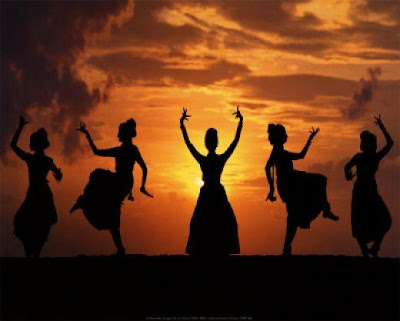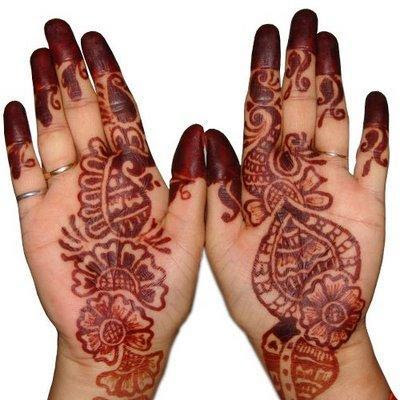- Mahatma Gandhi was born to Karamchand Gandhi and Putlibai on October 2, 1869 in Porbandar (India).
- When he was 13 years old, he got married to Kasturbai Makanji and was blessed with two children.
- He studied law in London between 1888 and 1891 and set sail to South Africa in 1893 where he opened his own law office.
- It was in 1906 that he began the Satyagraha movement in South Africa in protest to the law that all Indians should be finger printed and should also carry an identification card. Gandhi helped start a very peaceful campaign declaring that he would either go to the jail or die before following any anti – Asian laws. He was joined by thousands of Indians in this civil disobedience movement. With the help of his supporters, Gandhi organized strikes on the sugar plantations and coalfields and also led a march from Matal to Transvaal to protest against the Immigration Act. During this period, he was arrested several times. In 1914, the government of Union of South Africa relented and made many important concessions to the Immigration Act to meet Gandhi’s demands which included recognizing Indian marriages and the abolition of the poll tax.
- On completing his work in South Africa, Gandhi returned to India in 1915. He spent a year touring India on the advice of his political guru, Gopal Krishna Gokhale with the idea of knowing the ‘real India'.
- On completing the tour, Gandhi chose to settle down on the banks of river Sabarmati on the outskirts of the city of Ahmedabad where he also opened a Satyagraha Ashram.
- In India, Gandhi started the first Satyagraha in Champaran at the request of poor farmers as they were compelled by British indigo planters to grow indigo on 15% of their land and were then forced to part with the entire crop in lieu of rent. The Satyagraha forced the British Government to setup an enquiry to evaluate the conditions of the farmers. A committee was setup of which Gandhi too was a part and the committee ruled in favor of the farmers. The success of the first Satyagraha movement in India played an immense role in increasing Gandhi’s popularity in India.

Sonia Gandhi (born Edvige Antonia Albina Maino on 9 December 1946) is the President of Indian National Congress, one of the major political parties of India. She is Italian-born daughter-in-law of the late Prime Minister of India, Mrs. Indira Gandhi. After her husbandRajiv Gandhi's assassination in 1991, she was invited by the Indian Congress Party to take over the Congress but Gandhi refused and publicly stayed away from politics amidst constant prodding by the Congress. She finally agreed to join politics in 1997 and in 1998, she was elected as the leader of the Congress.
Since then, Gandhi has been the President of the Indian National Congress Party. She has served as the Chairperson of the ruling United Progressive Alliance in the Lok Sabha since2004. In September 2010, on being re-elected for the fourth time, she became the longest serving president in the 125-year history of the Congress party. Her foreign birth has been a subject of much debate and controversy.Although Sonia is actually the fifth foreign-born person to be leader of the Congress Party, she is the first since independence in 1947.

Just a few of the countless titles that the cricketing world has bestowed upon its favorite son - Sachin Ramesh Tendulkar. Without a doubt the best batsman of the modern era, and in all probability, second only to the Don, when it comes to the title of the 'Best Ever'. A man who singlehandedly unites a one billion-plus strong nation, Sachin Tendulkar is nothing short of a demigod in this cricket crazy country. In India, you have Hindus, Muslims, Christians, Sikhs, Parsis, Buddhists, etc., all of whom have their own deities, Gods and spiritual leaders. But come a game of cricket, and you instantly have one single person whom a billion Indians worship, pray to, and pray for...he is not Krishna, he isn’t Allah, neither is he Jesus...he is but a diminutive, unassuming man...one who carries the weight of an entire nation's expectations on his two shoulders when he walks in to bat...he is a man named Sachin Tendulkar. Sachin Tendulkar's records include a long, long list of ODI records, Test records, world records and other batting records, which if stacked up, would create a pile many, many times taller than the man’s 5 feet 5 inch frame. Let us have a quick look at all these amazing records of India’s most beloved son - Sachin Tendulkar.

Amitabh Harivansh Bachchan on 11 October 1942) is an Indian film actor. He first gained popularity in the early 1970s as the "angry young man" of Hindi cinema, and has since become one of the most prominent figures in the history of Indian cinema
Bachchan has won numerous major awards in his career, including four National Film Awards, three of which are in the Best Actor category, and fourteen Filmfare Awards. He is the most-nominated performer in any major acting category at Filmfare, with 36 nominations overall. In addition to acting, Bachchan has worked as a playback singer, film producer and television presenter, and was an elected member of the Indian Parliament from 1984 to 1987.

Lata Mangeshkar is one of the most iconic artists India has ever seen. Regarded by many as the finest female playback singer of the Indian film industry, Lata was born on 28th September, 1929 to an orthodox Maharashtrian family. Music was ingrained in her from a very early age by her father Deenanath Mangeshkar, who was a very famous classical singer. Lata’s mother Shudhamati was a housewife, while her four siblings- Hridaynath Mangeshkar, Usha Mangeshkar, Asha Bhonsle and Veena Mangeshkar – all are accomplished artists. While Mangeshkar did imbibe important musical skills though her father’s daily classical recitals, it was popular film singer K.L. Saigal who inspired her to take up singing as a serious artistic profession.
Lata Mangeshkar started her musical lessons at the age of five. However, it was not until 1942 when she began her career professionally after her father’s sudden demise. Her career spans 62 years and is still going strong. Throughout her career, she has sung over 1,000 Hindi songs. Moreover, she has also sung in over 36 regional and international languages.
Mangeshkar was inducted in the Guinness Book of World Records between 1974 and 1991 for rendering voice in over 25,000 solo, duet and chorus tracks. Although these figures were initially contested primarily by the fans of Mohammad Rafi (who is said to have sung over 28,000 songs), it was later established that reigned supreme after all.
In addition to her awesome singing portfolio, Lata was also a popular music composer and film producer. She even won the Maharashtra government’s Best Music Director Award for Sadhi Manase back in 1965. Although the list of awards won by Mangeshkar is almost endless, the most prominent of these are The Bharat Ratna, Padma Bhushan, Padma Vibhushan and Dada Saheb Phalke Award. She also won four Filmfare Awards for the Beast Female Playback Singer although she decided to relinquish these awards from 1969 onwards.

Mother Teresa was born Agnes Gonxha Bojaxhiu in Skopje*, Macedonia, on August 26**, 1910. Her family was of Albanian descent. At the age of twelve, she felt strongly the call of God. She knew she had to be a missionary to spread the love of Christ. At the age of eighteen she left her parental home in Skopje and joined the Sisters of Loreto, an Irish community of nuns with missions in India. After a few months' training in Dublin she was sent to India, where on May 24, 1931, she took her initial vows as a nun. From 1931 to 1948 Mother Teresa taught at St. Mary's High School in Calcutta, but the suffering and poverty she glimpsed outside the convent walls made such a deep impression on her that in 1948 she received permission from her superiors to leave the convent school and devote herself to working among the poorest of the poor in the slums of Calcutta. Although she had no funds, she depended on Divine Providence, and started an open-air school for slum children. Soon she was joined by voluntary helpers, and financial support was also forthcoming. This made it possible for her to extend the scope of her work. On October 7, 1950, Mother Teresa received permission from the Holy See to start her own order, "The Missionaries of Charity", whose primary task was to love and care for those persons nobody was prepared to look after. In 1965 the Society became an International Religious Family by a decree of Pope Paul VI.
Today the order comprises Active and Contemplative branches of Sisters and Brothers in many countries. In 1963 both the Contemplative branch of the Sisters and the Active branch of the Brothers was founded. In 1979 the Contemplative branch of the Brothers was added, and in 1984 the Priest branch was established.
The Society of Missionaries has spread all over the world, including the former Soviet Union and Eastern European countries. They provide effective help to the poorest of the poor in a number of countries in Asia, Africa, and Latin America, and they undertake relief work in the wake of natural catastrophes such as floods, epidemics, and famine, and for refugees. The order also has houses in North America, Europe and Australia, where they take care of the shut-ins, alcoholics, homeless, and AIDS sufferers.
The Missionaries of Charity throughout the world are aided and assisted by Co-Workers who became an official International Association on March 29, 1969. By the 1990s there were over one million Co-Workers in more than 40 countries. Along with the Co-Workers, the lay Missionaries of Charity try to follow Mother Teresa's spirit and charism in their families.
Mother Teresa's work has been recognised and acclaimed throughout the world and she has received a number of awards and distinctions, including the Pope John XXIII Peace Prize (1971) and the Nehru Prize for her promotion of international peace and understanding (1972). She also received the Balzan Prize (1979) and the Templeton and Magsaysay awards.
Hussain was a child prodigy, and was touring by the age of twelve. He went to the United States in 1970, beginning his international career which includes more than 150 concert dates a year. In 1973, he appeared on George Harrison's Living in the Material World album. A prolific composer, he has received widespread recognition.
Hussain is a founding member of Bill Laswell's 'World Music Supergroup' Tabla Beat Science.
Hussain participates in the Silk Road collaborative musical project. He teaches Tabla to advanced students in both San Francisco and Mumbai. Zakir participates in the Global Drum Project with percussionists from around the world.
In 1992, Hussain founded Moment! Records, which features original collaborations in the field of contemporary world music, as well as live concert performances by great masters of the classical music of India. The label presents his own world percussion ensemble, The Rhythm Experience, both North and South Indian classical recordings, Best of Shakti and the Masters of Percussion series. Moment Records’ 2006 release Golden Strings of the Sarode, with Aashish Khan and Zakir Hussain, was nominated for a Grammy Award for Best Traditional World Music Album category for that year.





















































